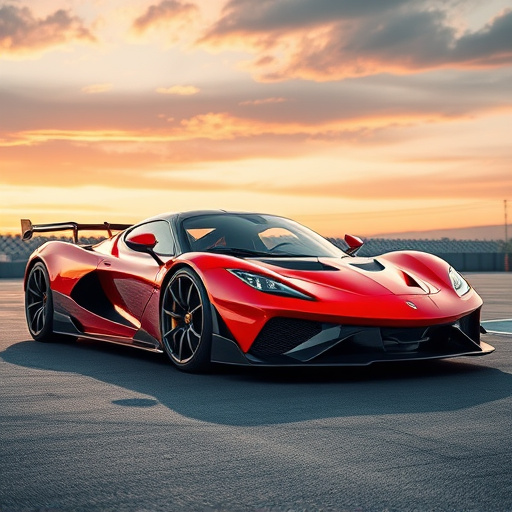Injen MR (Multi-Sensor) Technology intakes are advanced solutions for modern vehicles, improving engine performance and efficiency by seamlessly integrating with factory sensors. These intakes monitor air temperature, pressure, and humidity in real-time, enabling precise fuel injection and timing. Their wide sensor compatibility eliminates the need for modifications, maintains warranties, and ensures accurate data transmission to the ECU. By adopting standardized protocols, rigorous testing, and regular maintenance, these intakes offer optimal performance and efficiency, making them a popular choice among vehicle enthusiasts.
Factory sensor compatibility is a critical aspect of modern vehicle engineering, ensuring optimal performance and safety. This article delves into the essentials of understanding sensor compatibility, highlighting how Injen MR Technology intakes offer a revolutionary solution. We explore why this technology is a game-changer, providing seamless integration and enhanced efficiency. By following best practices, manufacturers can streamline processes, improve diagnostics, and deliver superior vehicle experiences. Discover how these intakes simplify compatibility challenges.
- Understanding Factory Sensor Compatibility: The Basics
- Injen MR Technology Intakes: A Game-Changer for Compatibility
- Ensuring Seamless Integration: Best Practices for Factory Sensor Compatibility
Understanding Factory Sensor Compatibility: The Basics

In today’s digital era, ensuring factory sensor compatibility is paramount for optimal vehicle performance and efficiency. At the heart of this process lies advanced technologies like Injen MR (Multi-Sensor) Technology intakes, which play a crucial role in enhancing engine management systems. These sensors monitor various parameters such as air temperature, pressure, and humidity, providing real-time data to the engine control unit (ECU). By seamlessly integrating with existing factory sensors, Injen MR technology enables more precise fuel injection, timing, and overall engine performance.
Understanding factory sensor compatibility begins with recognizing that each vehicle model has specific sensor requirements. Manufacturers equip their vehicles with a network of sensors designed to communicate with the ECU, ensuring smooth operation. When adding aftermarket modifications, such as performance intakes, it’s essential to ensure these new components can accurately interface with the existing sensor ecosystem. Proper compatibility ensures the ECU receives reliable data, leading to improved engine response and efficiency while avoiding potential system malfunctions or inaccuracies.
Injen MR Technology Intakes: A Game-Changer for Compatibility

Injen MR (Multi-Port) Technology intakes are a game-changer in terms of factory sensor compatibility, offering unparalleled versatility and performance for vehicle owners. This innovative technology allows for precise air distribution by dividing intake air into multiple paths, each optimized for specific operating conditions. By seamlessly integrating with modern vehicles’ complex engine management systems, Injen MR intakes ensure optimal fuel-air mixture delivery, leading to enhanced power outputs and improved fuel efficiency.
The key advantage lies in their compatibility with a wide range of sensors, such as mass airflow (MAF) and temperature sensors. These intakes are designed to work seamlessly with factory sensors, eliminating the need for costly modifications or replacement. This not only ensures accurate performance data but also maintains the vehicle’s warranty, making Injen MR Technology intakes a popular choice among enthusiasts seeking both reliability and top-tier performance.
Ensuring Seamless Integration: Best Practices for Factory Sensor Compatibility

Ensuring seamless integration of sensors is paramount in modern manufacturing, especially with advanced systems like Injen MR Technology intakes. The key to achieving this lies in adopting best practices that facilitate compatibility and optimize performance. Firstly, standardized protocols and interfaces should be established across all equipment and sensors to ensure seamless data exchange. This standardization minimizes communication errors and enhances the overall efficiency of the production line.
Secondly, thorough testing and calibration are essential. Every sensor must be rigorously tested for accuracy and reliability before integration. Calibration ensures that readings align with expected values, which is crucial for precise control and monitoring. Moreover, continuous monitoring and regular maintenance extend the lifespan of sensors, ensuring they remain efficient and aligned with production goals, particularly when dealing with intricate systems like Injen MR Technology intakes.
Injen MR Technology intakes have emerged as a powerful solution, offering enhanced factory sensor compatibility. By understanding the basics of sensor compatibility and implementing best practices, automotive enthusiasts can ensure seamless integration for improved performance. These innovative intakes provide a game-changing approach to overcoming compatibility challenges, allowing for a smoother transition and optimal engine functionality.














